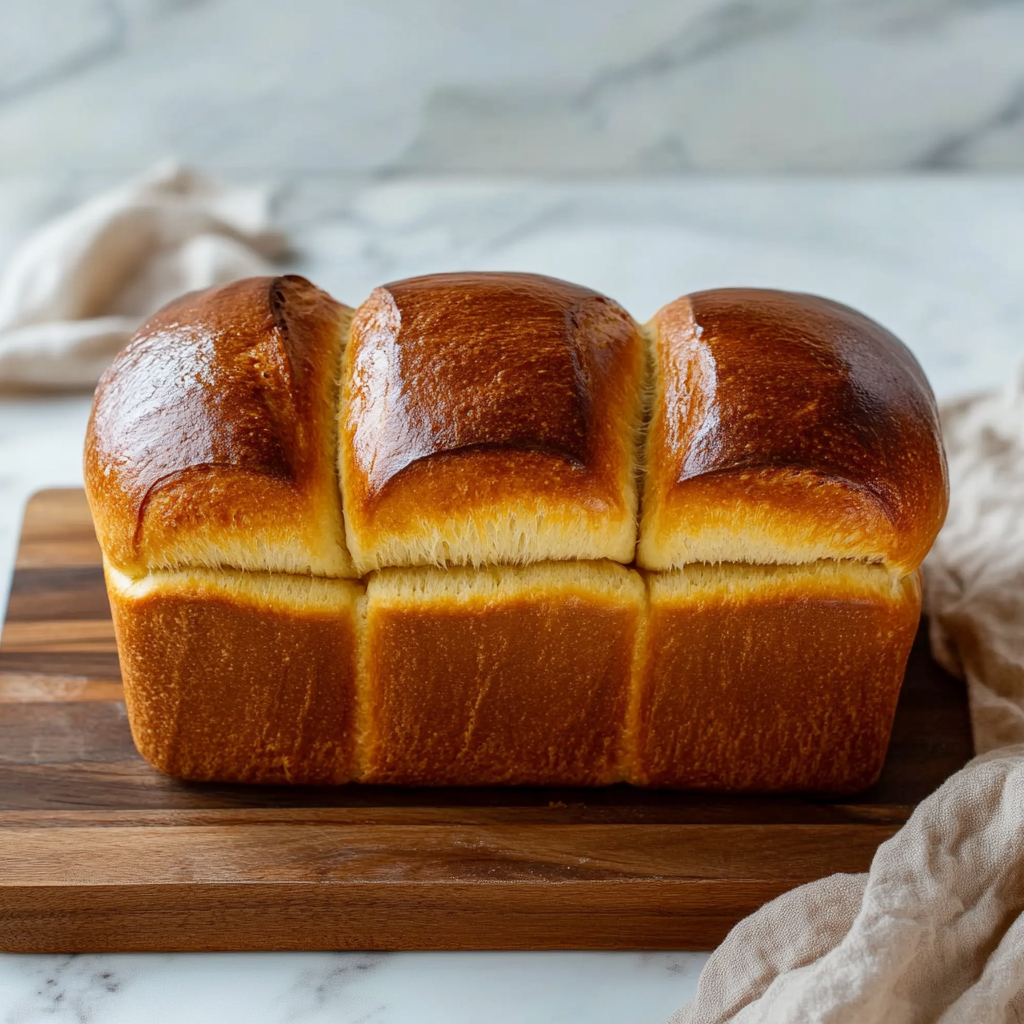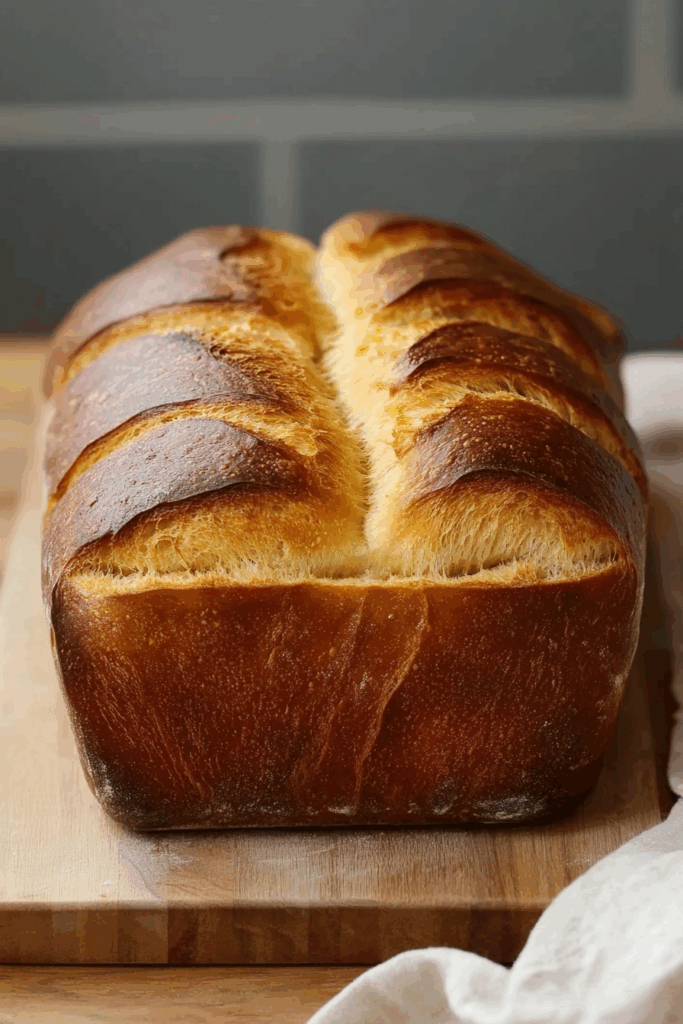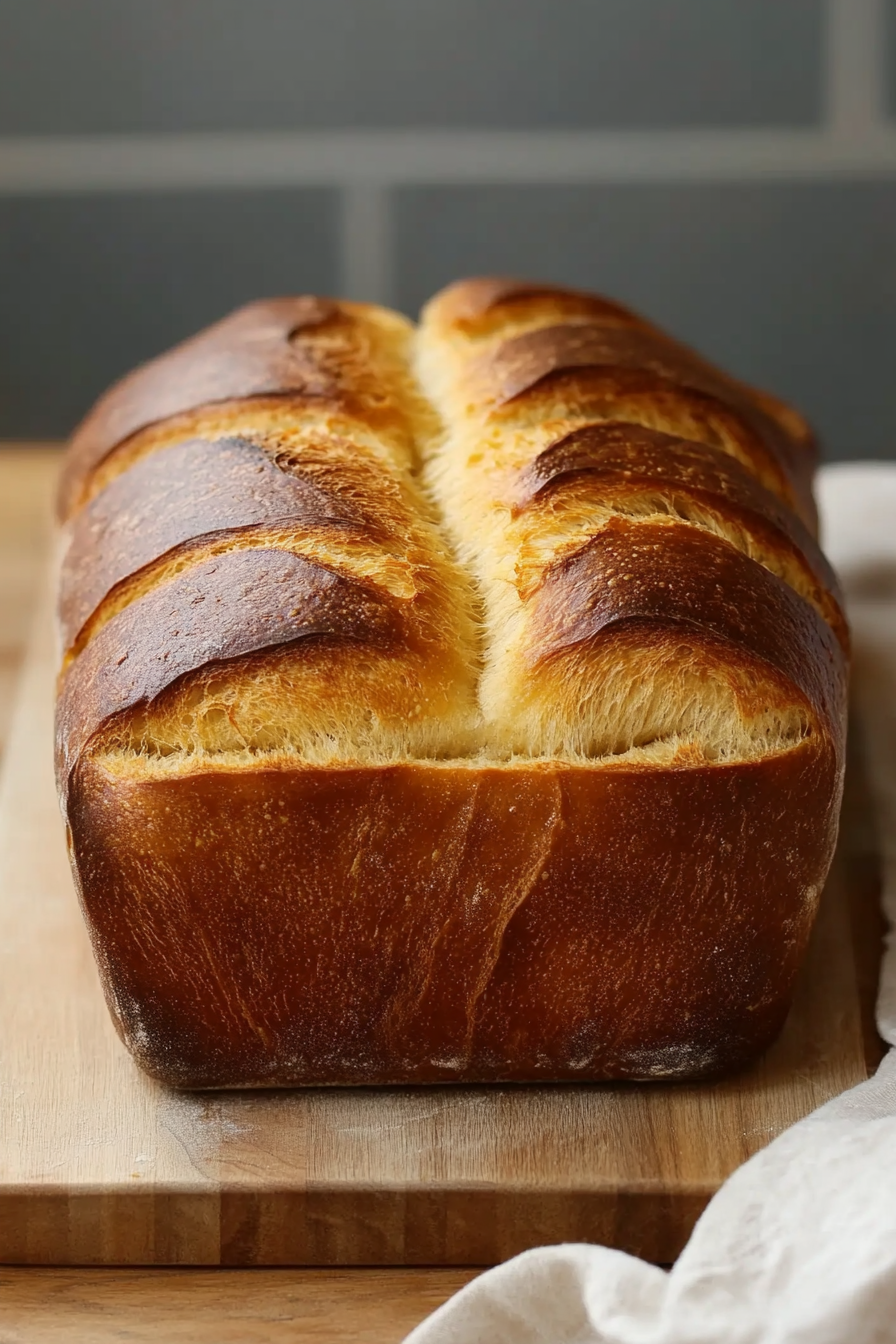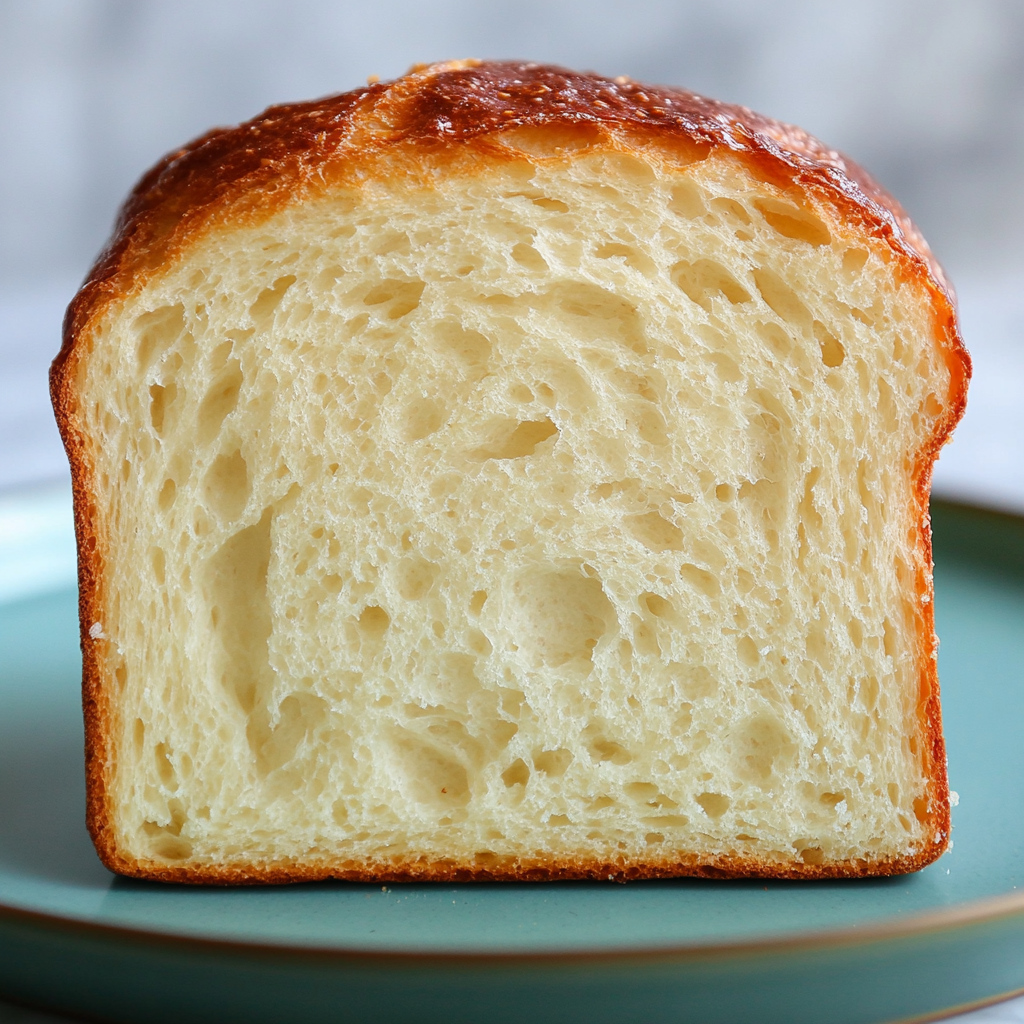Sourdough Brioche Recipe
Soft, buttery, and irresistibly tender, Sourdough Brioche Bread is the perfect marriage of rich French brioche and tangy artisan sourdough. This recipe transforms humble ingredients into an elevated loaf that’s golden, plush, and beautifully aromatic.

From breakfast toast to an indulgent sandwich base, Sourdough Brioche Bread offers a depth of flavor and texture that rivals any commercial loaf. Long fermentation enhances the taste, while a slow, gentle rise ensures a cloudlike crumb.
Key Ingredients for Sourdough Brioche Bread
- Bread Flour – Provides the protein needed for structure and that classic chewy-yet-soft brioche bite.
- Sourdough Starter (Levain) – Adds a slight tang and natural leavening that gives the loaf its lightness without commercial yeast.
- Yudane – A Japanese technique that gelatinizes flour, locking in moisture for a soft, tender crumb that stays fresh longer.
- Eggs – Enrich the dough, deepening both flavor and color while adding to the overall softness.
- Whole Milk – Adds moisture and richness, making each slice soft and tender.
- Butter – A full stick infuses the dough with luxurious flavor and that signature brioche richness.
- Sugar – Just enough to sweeten the dough and complement the buttery notes without overpowering.
How to Make It: Sourdough Brioche Bread, Step by Step
Start by building your levain and preparing the yudane several hours ahead. Once your starter is bubbly and the yudane has cooled, you’ll mix everything (except the butter) into a smooth dough.
Butter is slowly incorporated, piece by piece, until the dough is silky, elastic, and glossy. After a bulk fermentation with a few gentle stretch and folds, the dough is left to cold-proof overnight for flavor development and better handling.
The next day, shape the chilled dough into four equal parts, roll each piece, and place them into a loaf pan. Let the dough rise until puffy and airy before brushing with an egg wash and baking until golden and fragrant.

Recipe Tips & Brioche Variations You’ll Love
Keep your dough between 75–80ºF during fermentation for optimal rise and flavor—too cold and you’ll stall it, too warm and you risk overproofing. Patience is key with enriched sourdoughs; don’t rush any stage, especially the final proof, where the dough should feel billowy and aerated.
Try incorporating flavors like orange zest, vanilla bean, or cardamom for a twist on the classic. For a sweet spin, fold in chocolate chips or dried fruit before shaping. Or go savory with grated cheese and herbs baked right into the dough.
Storing Sourdough Brioche Bread the Smart Way
Once fully cooled, wrap the brioche tightly in plastic wrap or store it in an airtight container at room temperature for up to three days. For longer storage, slice and freeze the loaf in a zip-top bag—toast slices straight from the freezer for best results.
Avoid refrigeration, as it can dry out the delicate crumb. To revive slightly stale slices, a few seconds in the toaster or a gentle warm-up in the oven brings them right back to life.

Sourdough Brioche Recipe
Ingredients
Levain
- 30 g Bread Flour
- 30 g Sourdough Starter
- 30 g Warm Water
Yudane
- 58 g Boiling Water
- 58 g Bread Flour
- Sourdough Brioche Bread Dough
- 2 Eggs
- 59 g Whole Milk room temperature
- 212 g Bread Flour
- 27 g Granulated Sugar
- 5 g Sea Salt
Yudane (prepared earlier)
- Levain prepared earlier or substitute 90g active sourdough starter
- 113 g Unsalted Butter softened and divided into 8 portions
Egg Wash
- 1 tsp Water
- 1 Egg
Instructions
Build the Levain:
- In a clean jar, combine sourdough starter, warm water, and bread flour. Cover and allow to ferment in a warm spot until doubled in volume and bubbly, approximately 5 hours. Alternatively, use 90 grams of active starter directly.
Make the Yudane:
- Place the bread flour in a small heatproof bowl. Pour the boiling water directly over the flour and stir until a thick, gelatinous paste forms. Let cool completely.
Mix the Dough:
- Combine all ingredients for the dough—excluding the butter—in a stand mixer fitted with a dough hook. Mix on low until a rough dough forms, then increase to medium speed for 5 minutes. The dough should become smoother and mostly pull away from the sides of the bowl.
Incorporate the Butter:
- With the mixer on medium speed, gradually add the softened butter, one piece at a time. Wait for each piece to fully blend before adding the next. Continue mixing for at least 10 minutes in total. When all butter is incorporated, mix for an additional 5 minutes until the dough is glossy, elastic, and passes the windowpane test.
Bulk Fermentation:
- Transfer the dough to a lightly oiled bowl, form into a ball, cover, and allow to ferment at 78ºF for about 5 hours. Perform one set of stretch and folds after the first hour, and a second set if the dough still appears slack after the second hour.
Overnight Proof:
- Refrigerate the dough for at least 8 hours, or up to 48 hours, to complete its cold fermentation.
Divide and Shape:
- Butter or spray a 9″x5″ loaf pan. Remove the chilled dough, punch it down, and divide it into four equal pieces (approximately 170–175g each). Flatten each into a rectangle and roll into a tight cylinder. Place all four pieces seam side down in the prepared pan.
Final Proof:
- Let the dough rise, covered, in a warm place at 78ºF for around 5 hours, or until doubled. A gentle press with a floured finger should leave an indentation when the dough is ready.
Bake:
- Preheat the oven to 400ºF. Prepare an egg wash by whisking an egg with water. Gently brush the risen dough. Place the loaf in the oven and immediately reduce the temperature to 350ºF. Bake for 45 minutes, until the crust is golden and internal temperature registers 195–205ºF. Let cool for 5 minutes in the pan, then transfer to a wire rack to cool completely.






